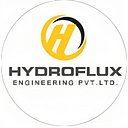Effluent Treatment Plant
Comprehensive Guide: Types of Aerators Used in Wastewater Treatment
In the realm of wastewater treatment, aerators are unsung heroes, diligently working to enhance water quality and maintain ecological balance. The nutrient content of wastewater is a critical factor affecting the delicate equilibrium between organisms and their environment. To address this challenge, regulatory authorities worldwide impose stringent regulations on liquid waste producers, mandating wastewater treatment before discharge. In this comprehensive guide, we delve into the two primary categories of aerators, surface and submerged, their diverse applications, and the critical role they play in wastewater treatment.
Surface Aerators: Unlocking Versatile Wastewater Solutions
Surface aerators, as the name suggests, are devices designed to operate on the water’s surface, serving as powerful tools for mixing and breaking down wastewater. These versatile aerators find applications in a multitude of scenarios, making them invaluable assets in wastewater treatment.
Applications of Surface Aerators
Surface aerators are not limited to a single industry or purpose. They find applications in:
1. Agricultural Wastewater Treatment
Surface aerators play a pivotal role in treating wastewater for agricultural purposes. They facilitate the oxygenation of water, creating an environment conducive to biological oxidation.
2. Petrochemical Industry
In the petrochemical sector, surface aerators are instrumental in wastewater treatment, ensuring the removal of contaminants and pollutants from industrial processes.
3. Food Processing Facilities
Food processing plants utilize surface aerators to treat wastewater, adhering to environmental regulations while enhancing water quality.
4. Paper and Pulp Industry
Surface aerators are also indispensable in the paper and pulp industry for wastewater treatment, aligning with sustainability goals.
Efficiency and Considerations
Surface aerators are deployed in wastewater-holding ponds and treatment facilities, where they promote biological oxidation — a pivotal treatment process. These aerators come in varying depths, typically ranging from 1.5 to 5.0 meters, effectively removing 80 to 90 percent of BOD (Biochemical Oxygen Demand). However, it’s important to note that surface aerators are relatively expensive and are typically single-use, necessitating careful consideration of the wastewater lagoon’s size before choosing the appropriate model.
Submerged Aerators: Elevating Oxygenation in Wastewater
Submerged aerators are an excellent means of infusing oxygen into wastewater, boasting a range of benefits and playing a pivotal role in various wastewater treatment processes.
The AJ Radial Submerged Aerator
The AJ radial submerged aerator is a widely favored option in sewage treatment plants. This aerator efficiently draws in air and then blends it with the water through a proprietary air mixing chamber. This innovative design optimizes the working area while minimizing the creation of stagnant, oxygen-deprived zones.
Role of Aeration in Decomposition
Aeration catalyzes the decomposition process by fostering the growth of microorganisms. Bacteria, nourished by organic matter, naturally aggregate into flocs, accelerating decomposition. This process also reduces ammonia and hydrogen sulfide levels in wastewater. Additionally, aeration supports aquatic life in artificial aquatic systems, making it an essential component of wastewater treatment lagoons.
Mechanical Aerators: Diverse Solutions for Wastewater Treatment
Mechanical aerators encompass two main types employed in wastewater treatment: surface aerators and submerged aerators.
Surface Aerators
Surface aerators feature a floating design with an impeller that rotates on a horizontal axis. These aerators are typically smaller and more compact, making them portable and versatile for various applications.
Submerged Aerators
Submerged aerators are equipped with a rotating shaft and multiple paddles that efficiently entrain air in the water. These aerators are ideal for circular tanks and oxidation ditches, especially in treating shallow lagoons. Selecting the right type of mechanical aerator depends on your specific wastewater treatment needs, as they offer various capabilities to entrain air effectively.
Membranes: Enhancing Aeration Systems for Septic Tanks
In septic systems, aeration plays a crucial role in increasing oxygen levels within wastewater. Adequate oxygen levels prevent solids in wastewater from settling and forming sludge, thus expediting the treatment process, enhancing energy efficiency, and reducing operational costs.
Coarse Bubble Diffusers: A Key Player in Secondary Treatment
Coarse bubble diffusers find extensive use in the secondary treatment phase of wastewater treatment plants. These diffusers are known for their effectiveness in preventing clogging in wastewater systems. Their larger bubbles make them more resilient to plugging compared to fine bubble diffusers, which are less efficient in secondary treatment.
Types of Coarse Bubble Diffusers
Two common types of coarse bubble diffusers are:
1. Disk Diffusers
Disk diffusers are a popular choice due to their effectiveness. However, they can be challenging to install.
2. Tube Diffusers
Tube diffusers consist of a long plastic tube surrounded by an EPDM rubber membrane. When compressed air is forced through the rubber, it expands, creating small holes for air release. Tube diffusers are easier to install but may not necessarily be cost-effective.
In conclusion, the world of wastewater treatment relies heavily on the application of aerators, each playing a unique role in ensuring the efficient treatment of wastewater and the preservation of our environment. Whether you’re in an industrial setting, an agricultural facility, or managing a septic system, understanding the right type of aerator for your application is crucial for success in wastewater treatment.
